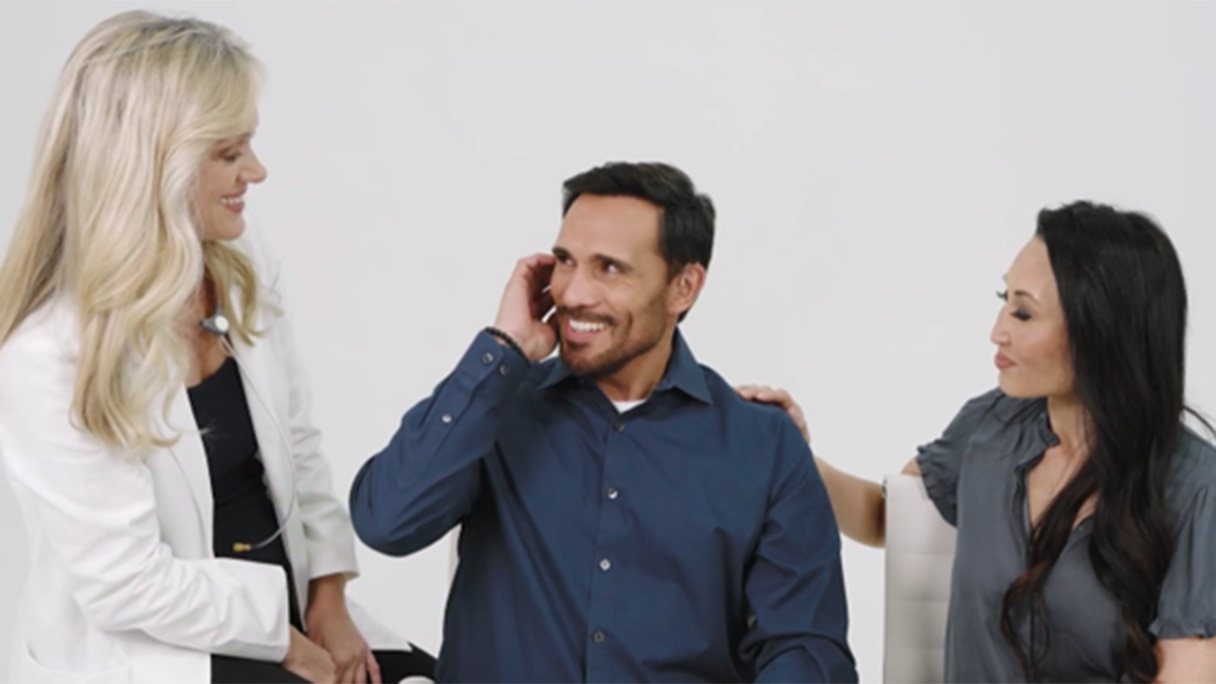7 Tips for Engaging Younger Patients in Their Hearing Health
Research shows a lack of urgency among consumers, especially younger generations, when it comes to taking care of their hearing health. Learn some tips for getting younger patients more engaged.
By Jessica Lovell
VP of Client Marketing, Synchrony Health and Wellness/Audiology
Posted Oct 21, 2024 - 5 min read

Many people don’t see the value in hearing loss prevention, yet hearing is an integral part of how we experience the world. To understand why there is a lack of action among consumers, Synchrony commissioned the 2024 Hearing Health & Loss Prevention Study.
The study revealed that many consumers simply don’t consider audiology care a normal part of their routine healthcare and fail to understand the impact of hearing loss, and younger generations are especially hesitant to pursue the hearing care or treatment they need.1 Here are seven ways to help get young patients to care about, prioritize and act on hearing healthcare.
How to Get Patients to Take the First Step
Synchrony's research revealed that most people simply don’t feel a need to act on preserving their hearing health, with only 10% of consumers visiting an audiologist in the past year.1
1. Bring awareness to online screenings
Convenience is key for younger patients. Informing them of simple and effective ways to self-monitor their hearing health can open the door for them to care about their long-term wellness. Among those who have never had a hearing test, 56% said they were more likely to take a hearing test online than in person.1
How to Get Patients to Prioritize their Hearing Health
While audiologists say they are seeing more young adults with hearing impairment than before, 25% of Gen Zers, 21% of Millennials, and 11% of Gen Xers say hearing impairment only affects older people.1
2. Help them understand the impact on wellness
Just under half of consumers (49%) said knowing the link between hearing loss and dementia swayed them to get their hearing checked.1 Sharing the long-term effects of hearing damage can help increase hearing loss awareness and help patients better grasp the serious implications of neglecting their hearing health.
3. Promote devices that fit their lifestyle
Let patients know that hearing devices have become more advanced and subtle with features like Bluetooth connectivity, sleek designs and noise cancellation. Levels of internalized hearing aid stigma are evident across all generations, as six in 10 people with hearing devices say they are embarrassed to be seen wearing them.1
4. Offer ways to help them pay for care
Offering flexible financing options like the CareCredit health and wellness credit card can play a pivotal role in easing cost concerns. You can use the CareCredit digital cost estimator tool or downloadable cost estimator sheets to show patients how the cost of their device can break down into convenient monthly payments.
How to Spread Awareness About Hearing Loss
Consumers need to know that not seeking audiology services isn’t the answer, as 86% of those who have hearing devices say they wish they had gotten them sooner.1
5. Meet younger patients on their favorite platforms
Young adults live online, making social media channels like TikTok, Instagram and YouTube perfect opportunities for distributing educational content. Utilizing these platforms to spread hearing loss awareness can help increase your potential patients’ engagement in their hearing healthcare.
6. Tap into loved ones
Encourage your current audiology patients — especially older adults — to be strong advocates to their loved ones. One in four consumers say they would be motivated to get their hearing checked if a loved one recommended it,1 suggesting that family members can have a significant impact on the health decisions of younger individuals.
7. Use CareCredit resources
CareCredit has developed a provider toolkit to help audiology professionals reach younger patients. Included are tips for reaching a younger audience as well as marketing materials to help turn your current patients into hearing health advocates.
Understanding attitudes towards hearing loss prevention and the internal motivations of patients can help you better reach and engage with them. Synchrony’s research offers valuable insights into how these younger generations think, and by applying these strategies, you can make hearing care more accessible, appealing and easily integrated into their lifestyles.
The provider toolkit is coming soon. Please check back on the CareCredit Provider Insights hearing page so you don’t miss it.
A Patient Financing Solution for Your Hearing Care Practice
If you want to help your patients manage the cost of your practice's exams, procedures, and products, consider offering the CareCredit credit card as a payment option. CareCredit allows cardholders to pay for hearing services and devices over time while helping to enhance the payments process for your practice.*
When you accept CareCredit, patients can see if they prequalify with no impact to their credit score, and those who apply, if approved, can take advantage of special financing on every qualifying purchase.* Additionally, you will be paid directly within two business days.
Learn more about the CareCredit credit card as a patient financing solution or start the provider enrollment process by filling out this form.
Author Bio
Jessica Lovell is VP of Client Marketing and Large Client Lead for Synchrony Health and Wellness/Audiology. She leads marketing relationships with audiology providers, partners and associations to develop and implement marketing and communication strategies that align with patient, provider, business and financial goals. Jessica has more than 15 years of marketing experience at companies such as Synchrony, Citibank and The PGA TOUR.
Healthcare payment and financing solution
The CareCredit health and wellness credit card helps improve the payment experience for patients and clients, and your financial performance.
Get StartedReady to help more patients and clients get the care they want and need?
Get StartedReady to help more patients and clients get the care they want and need?
Get Started* Subject to credit approval.
The information, opinions and recommendations expressed in the article are for informational purposes only. Information has been obtained from sources generally believed to be reliable. However, because of the possibility of human or mechanical error by our sources, or any other, Synchrony and any of its affiliates, including CareCredit, (collectively, “Synchrony”) does not provide any warranty as to the accuracy, adequacy, or completeness of any information for its intended purpose or any results obtained from the use of such information. The data presented in the article was current as of the time of writing. Please consult with your individual advisors with respect to any information presented.
© 2024 Synchrony Bank.
Sources:
1 Hearing Health & Loss Prevention study, conducted by Savanta and GCI Health on behalf of Synchrony, February 2024 Retrieved from: https://www.carecredit.com/providers/insights/hearing-health-loss-prevention-study/




